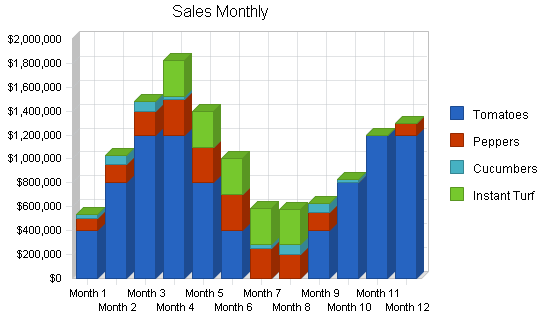Introduction
The use of pesticides, herbicides, and fertilizers for crop production is called conventional farming. Farmers use convectional farming system to grow large quantity crops such as rice, grains, and genetically modified crops. Hydroponic farming utilizes chemicals and liquid fertilizers to facilitate plant growth. While consumers prefer hydroponic vegetables and fruits, food scarcity remains an agricultural problem. Conventional farming utilizes pesticides and other land requirements to facilitate crop yield.
However, pest and plant diseases continue to plague conventional farming. The choice of farming system is affected by harvest, taste, and health status. Thus, harvest yields, seasonality, control, cost, and maintenance influences consumer demand (Baker & Ako, 2009). Hydroponic farming is very expensive (Bright Farms Inc., 2013).
The inputs required to produce a hectare of crop conventionally may be doubled for hydroponic farming. A major advantage of hydroponic farming involves plant isolation from land requirements (Circle A Farms, 2013). While health nutritionists debate the effects and benefits of the two farming systems, we will analyze their benefits based on agricultural yield.
Analysis
The comparison between conventional and hydroponic farming was carried out using an observed harvest results. The instruments for the analysis were scored based on crop yield. I used the prospective hindsight bias to determine a suitable farming system. I also introduced scenario planning to decide harvest types and the market target.
The instruments for coding the examination include farming requirements, types of harvest and consumption rate. Each variable will be categorized using different parameters. We will subdivide land requirements into five parameters, which include space, access to supply, controls, maintenance, and season. Conventional farming requires a large land for cultivation. Thus, the quantity of the harvest is directly proportional to the space provided (Coolong, 2012). Hydroponic farming does not require a large space.
A farmer can produce large quantities of tomatoes using a little space. From the analysis, we scored conventional and hydroponic farming in a ratio of 3:9. Using access to supplies as a parameter, conventional farming is more accessible than hydroponic farming. We scored the access to supply in a ratio of 9:15.
Conventional farming requires large land treatment than hydroponic farming. Disease contamination is lower with hydroponic farming than conventional farming Modern Farmer Media, 2013). Farmers can control the spread of insects and diseases in a hydroponic farm than an open conventional farm (Crop King Inc., 2013). Thus, we scored convectional farming and hydroponic farming in a ratio of 9:17. However, hydroponic farming is very expensive and difficult to maintain.
The cost of pesticides and fertilizers using in a convectional farm is less than its equivalent in a hydroponic farm. The presence of soil nutrients in a conventional farm reduces fertilizer inputs as required on a hydroponic farm. Hydroponic farming has no particular season. It is a major advantage of the farming system (Garden guides, 2013). Unlike conventional farming which is affected by seasons, hydroponic farming can be done yearly. Thus, we scored convectional and hydroponic farming in a ratio of10:30.
We used harvest types as the second instrument for the analysis. We compared the demand, packaging, and ease of harvest of four crops. The crops include lettuce, herb, tomatoes, and strawberry. From the analysis, the demand for herbs and lettuce using hydroponic farming was higher than the demand for tomatoes and strawberries (Gopalakrishnan, 2007). Consequently, the ease of packaging and harvesting herbs was higher in hydroponic farming than convectional farming.
Using the third instrument for the analysis, conventional farming is characterized by price sensitivity, seasonality of produce, small purchases, varied market prices, and uneducated suppliers (Seasons in the Sun Farm, 2013). Hydroponic farming is characterized by large purchases, large market, consistency, high demand, crop availability, and educated farmers (Green Spirit Farms, 2013).
Research summary
The research analysis was carried out between conventional and hydroponic farming. Our observations and findings will help farmers decide on which farming system to use. Three instruments were used in the experiment. We categorized the instruments using different parameters. We scored the instruments based on the results obtained. Thus, the research results will facilitate our recommendations.
Conclusion
I will recommend hydroponic farming because of its benefits. Although it is cost efficient, it improves the health status of consumers. Hydroponic farming involves the isolation of plant from soil, pest, and diseases.
Thus, farmers will not be affected by the spread of resistant pest and diseases. The cost of harvesting, treating, and preserving crops from a conventional farm equals the cost of establishing a hydroponic farm. Thus, I strongly recommend the use of hydroponic farming. The seasonality of fruits, herbs, and vegetables can be eliminated using hydroponic farming.
References
Baker, A. & Ako, H. (2009). Small-scale lettuce production with hydroponics or aquaponics. Web.
Bright Farms Inc. (2013). Hydroponic farming. Web.
Circle A Farms. (2013). Hydroponic lettuce. Web.
Coolong, T. (2012). Hydroponics lettuce. Web.
Crop King Inc. 2013. Helping to establish and grow your hydroponic. Web.
Garden guides. (2013). The advantages of hydroponics over conventional farming. Web.
Gopalakrishnan, T (2007). Vegetable crops. New Delhi, India: New India Publishing.
Green Spirit Farms. (2013). A comparison of hydroponic systems to traditional dirt farming. Web.
Modern Farmer Media. (2013). Dirt-free farming: Will hydroponics (finally) take off? Web.
Seasons in the Sun Farm. (2013). Hydroponic products. Web.
Appendix




